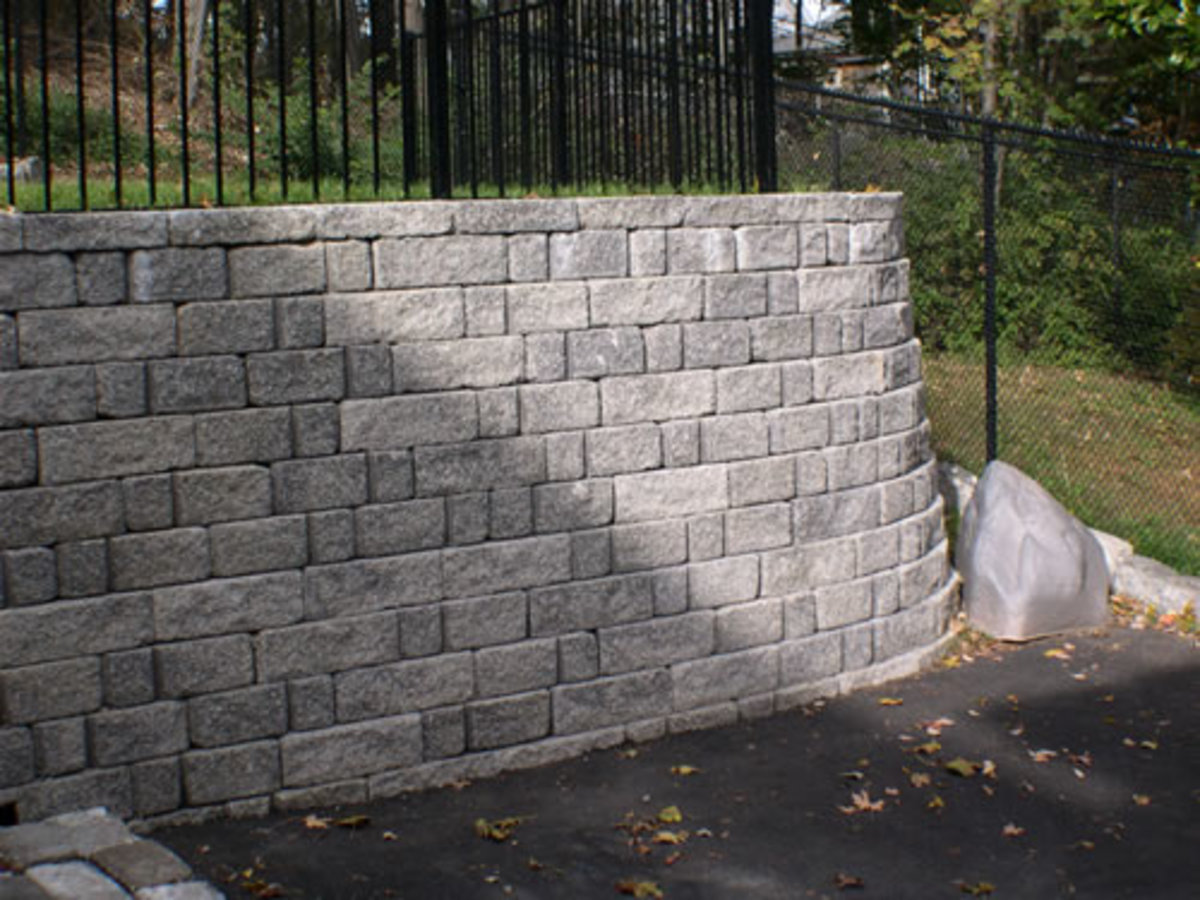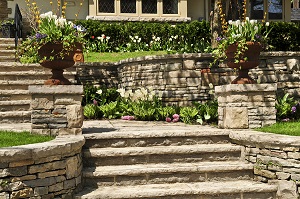Concrete Overlay & Retaining Wall Restoration Montreal Things To Know Before You Get This
Table of ContentsHow Concrete Overlay & Retaining Wall Restoration Montreal can Save You Time, Stress, and Money.9 Easy Facts About Concrete Overlay & Retaining Wall Restoration Montreal Described
Maintaining wall surfaces are fairly inflexible walls used for supporting soil side to side to ensure that it can be kept at different degrees on the two sides. Maintaining walls are structures designed to restrain soil to a slope that it would certainly not normally maintain to (generally a high, near-vertical or vertical slope). They are utilized to bound soils in between two various elevations commonly in areas of surface having unfavorable slopes or in locations where the landscape requires to be shaped significantly as well as crafted for more particular functions like hill farming or roadway walkways. A preserving wall surface that maintains soil on the behind as well as water on the frontside is called a seawall or a bulkhead.
A keeping wall surface is a structure created and also built to withstand the lateral stress of dirt, when there is a preferred adjustment in ground elevation that exceeds the angle of repose of the dirt. Concrete Overlay & Retaining Wall Restoration Montreal. A cellar wall is hence one sort of preserving wall. Yet the term generally describes a cantilever maintaining wall surface, which is a freestanding structure without side support at its top. These are cantilevered from a footing as well as rise above the grade on one side to retain a higher level grade on the opposite side. The wall surfaces should withstand the lateral stress produced by loose dirts or, in many cases, water stress.

Planet stress will press the wall onward or rescind it if not correctly attended to. Likewise, any kind of groundwater behind the wall surface that is not dissipated by a drain system causes hydrostatic stress on the wall. The complete stress or thrust may be presumed to act at one-third from the lowest depth for lengthwise stretches of uniform elevation. It is very important to have appropriate drainage behind the wall surface in order to limit the pressure to the wall's style worth. Drain materials will certainly reduce or eliminate the hydrostatic stress and boost the stability of the product behind the wall surface. Drystone maintaining walls are normally self-draining.
The smart Trick of Concrete Overlay & Retaining Wall Restoration Montreal That Nobody is Discussing
5 against side sliding as well Clicking Here as overturning. Numerous types of maintaining wall surfaces Building sorts of gravity maintaining walls Gravity wall surfaces depend upon their mass( stone, concrete or other heavy product) to withstand stress from behind and also might have a 'batter' obstacle to enhance stability by leaning back toward the retained dirt. For short landscape design walls, they are frequently made from mortarless stone or segmental concrete units (masonry units). Dry-stacked gravity wall surfaces are rather adaptable and do not call for a rigid footing. Previously in the 20th century, taller preserving wall surfaces were typically gravity wall surfaces made from large masses of concrete or rock. Today, taller preserving walls are progressively developed as composite gravity walls such as: geosynthetics such as geocell cellular confinement planet retention or with precast encountering; gabions (piled steel cord baskets full of rocks); crib wall surfaces (cells accumulated log cabin design from precast concrete or timber and filled with granular material).

Sheet stack retaining walls are typically used in soft soil as well as tight rooms. Sheet heap walls are driven right into the ground and also are composed of a range of product including steel, plastic, aluminum, fiberglass or timber slabs. Concrete Overlay & Retaining Wall Restoration Montreal. For a fast estimate the product is typically driven 1/3 above ground, 2/3 underground, but this might be modified relying on the setting. Taller sheet pile walls will certainly require a tie-back anchor, or "dead-man" put in the soil a distance behind the face of the wall, that is connected to the wall, normally by a cable television or a pole. Supports are then positioned behind the possible failing plane in the soil.
Depending on the task, the bored heap you could look here keeping wall might include a series of earth supports, reinforcing beams, soil improvement procedures as well as shotcrete reinforcement layer. This building strategy tends to be utilized in situations where sheet loading is a page legitimate construction service, but where the vibration or sound degrees generated by a heap chauffeur are not acceptable. An anchored retaining wall surface can be created in any of the abovementioned styles but also includes extra toughness using wires or other keeps anchored in the rock or dirt behind it. Usually driven into the product with boring, supports are then increased at the end of the cable television, either by mechanical means or commonly by infusing pressurized concrete, which expands to create a bulb in the soil.